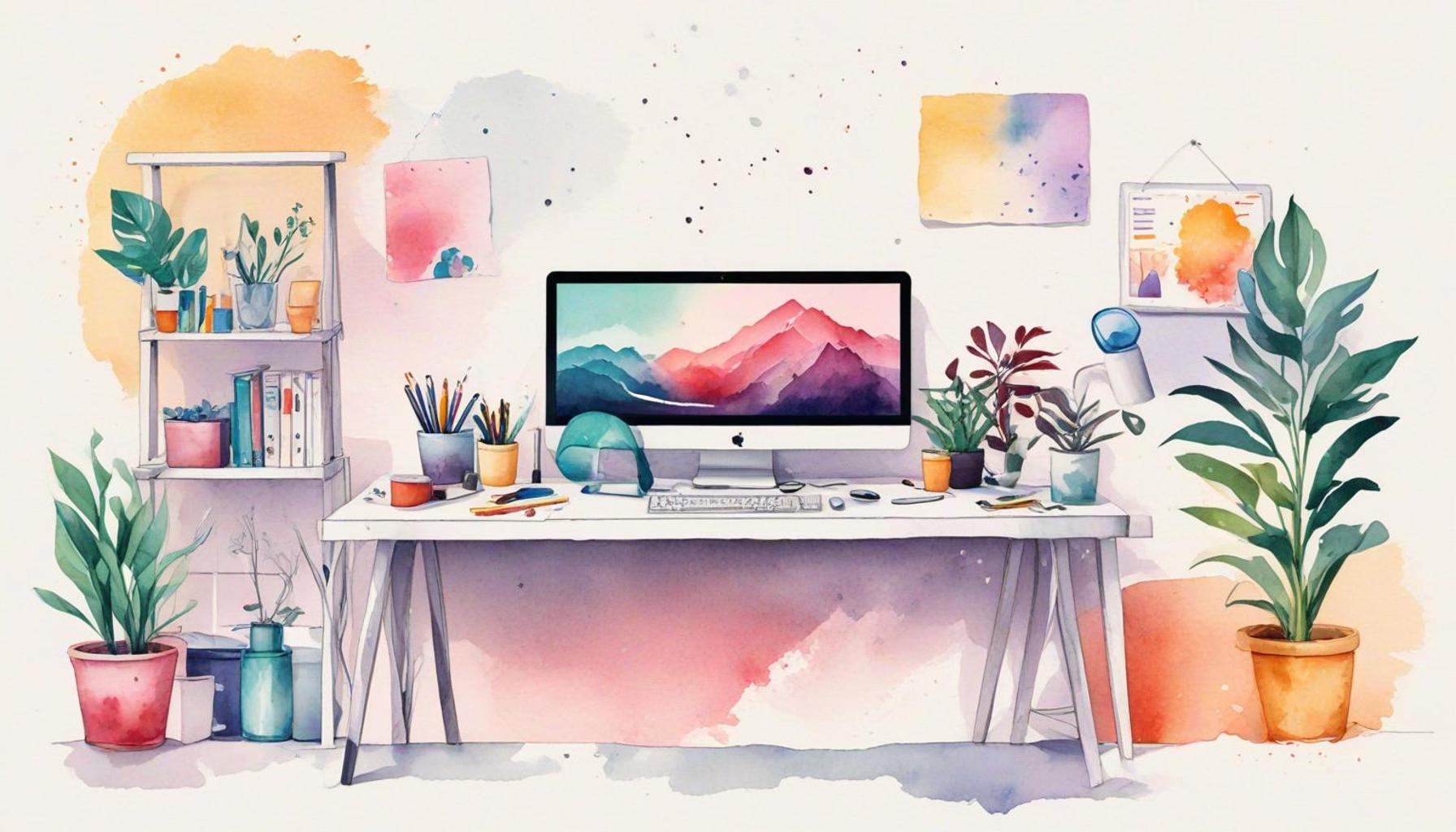Digital Minimalism: The Importance of Disconnecting to Live Intentionally

The Importance of Disconnecting in a Digital Age
In an era where information is perpetually at our fingertips, managing our connection to technology has never been more crucial. With notifications dinging from every direction and endless content to consume, many individuals find themselves feeling overwhelmed rather than empowered by their devices. This phenomenon has spawned the movement known as digital minimalism, which advocates for a more purposeful interaction with technology. By intentionally selecting which digital tools enhance our lives and which create unnecessary clutter, we can reclaim valuable time and mental clarity.
To underscore the need for this approach, consider the striking data points emerging from various studies. A 2023 survey revealed that the average American dedicates more than 11 hours per day to consuming digital media, a number that has been steadily increasing over the last decade. This excessive engagement with screens has been correlated with a rise in anxiety and depression, particularly among adults. As individuals become increasingly tethered to their devices, the quality of their interactions both online and offline can suffer dramatically. Moreover, the minimalist philosophy extends beyond the digital realm; it advocates for less clutter in our mental spaces, which can be just as beneficial as decluttering our physical environments.
Evaluating Your Relationship with Technology
Adopting a digital minimalist mindset requires introspection and a deliberate evaluation of our technology use. Here are a few practical strategies to help you embark on this journey:
- Identify essential apps: Determine which applications and tools truly add value to your life. Consider how each one aligns with your personal or professional goals. For instance, if you’re passionate about fitness, keeping a health tracking app could be beneficial, whereas an app focused on celebrity gossip may detract from your time.
- Set boundaries for social media usage: Allocate specific times during the day for social media interaction. Tools like screen time monitors can help enforce these limits by alerting you when you’ve exceeded your set goals.
- Engage in digital detox periods: Dedicate regular intervals—such as weekends or specific days of the month—to unplug from all digital devices. During these times, explore offline hobbies, spend time in nature, or connect with friends and family face-to-face.
By actively disconnecting from the omnipresent digital noise, we create room for richer, more meaningful experiences. Embracing intentional living shifts our focus towards what is truly important, whether that be personal growth, relationships, or creative pursuits. This fundamental change in perspective encourages a healthier, more balanced lifestyle while reducing feelings of anxiety and stress linked to constant connectivity.
As the world continues to pivot towards a digital-first mentality, understanding the importance of stepping back and reassessing our screen habits is essential. The journey may not be simple, but the rewards—a clearer mind, deeper connections, and an overall sense of fulfillment—are worth the effort.

DIVE DEEPER: Click here to discover the power of minimalism
Rethinking Our Digital Footprint
The concept of digital minimalism encourages us to step back and reevaluate the role technology plays in our daily lives. With the massive influx of information available at any given moment, it is easy to lose track of what truly matters. A recent study by the American Psychological Association revealed that nearly 60% of adults feel overwhelmed by the amount of information they encounter online. This information overload often leads to decision fatigue, where the sheer volume of choices impairs our ability to make informed and meaningful decisions. By practicing digital minimalism, individuals can filter out unnecessary digital distractions and focus on what aligns with their values and goals.
A pivotal aspect of this intentional living is understanding the relationship we have with our devices. Take, for example, the average smartphone user who checks their phone more than 50 times a day. Each of these interactions can serve as a double-edged sword—offering access to communication and knowledge but consuming our attention and energy in equal measure. To truly live intentionally, we must recognize how much time we waste mindlessly scrolling through feeds or responding to non-urgent notifications.
Crafting a Personalized Digital Usage Blueprint
To effectively embrace digital minimalism, it is essential to create a personalized plan that resonates with your lifestyle and priorities. Here are several actionable steps to help you design a healthier interaction with technology:
- Conduct a digital audit: Review your current app usage to identify which applications you use most frequently and assess their impact on your life. Are these apps enriching your time, or do they merely drain your energy?
- Limit notifications: Take control of the constant pings and alerts by disabling non-essential notifications. This simple action can significantly reduce interruptions and help maintain your focus on more meaningful activities.
- Curate your content consumption: Be selective about the websites, podcasts, and media you engage with. Embrace content that brings value to your life, whether that involves personal growth, education, or inspiration.
Engaging with technology in an intentional manner opens avenues to improve mental clarity and emotional wellbeing. A 2023 study found that participants who practiced intentional tech usage reported a 25% increase in overall happiness, largely attributed to improved relationships and reduced cognitive overload. As we begin to remove the digital clutter, we foster an environment that prioritizes meaningful connections, creativity, and personal development.
Ultimately, the journey towards digital minimalism is not about limiting technology but rather redefining our engagement with it. Just like decluttering our physical spaces can lead to a sense of tranquility, cultivating a mindful relationship with technology can lead to a more fulfilling, intentional life. By understanding the importance of disconnecting, we make room for our passions, deepening our experiences both online and offline.
| Advantages | Benefits of Digital Minimalism |
|---|---|
| Enhanced Focus | Eliminates distractions, allowing deeper concentration on meaningful tasks. |
| Improved Mental Health | Reduces anxiety from constant connectivity, promoting a sense of peace. |
| Purposeful Living | Encourages prioritization of values and goals, thus fostering a more intentional lifestyle. |
| Simplified Relationships | Strengthens personal connections by encouraging face-to-face interactions. |
The essence of digital minimalism lies in embracing a lifestyle that reflects intentionality. The profound mindset shift towards enhanced focus enables individuals to immerse themselves in meaningful endeavors without the clamor of distractions from multiple devices. Such a focused approach is critical in a fast-paced world where superficial engagements often dilute meaningful interactions.Moreover, the impact on mental health cannot be overlooked. Disconnecting from relentless notifications and online pressure creates a sanctuary of tranquility. This withdrawal from digital noise aids in alleviating anxiety, allowing for a clearer mental space conducive to creativity and productivity. Furthermore, digital minimalism fosters purposeful living by compelling individuals to assess their values and make deliberate choices that align with their personal and professional aspirations. This reflection not only enriches one’s own life experience but also enhances relationships, as fewer digital distractions lead to deeper, more authentic connections. In this age of hyperconnectivity, embracing these advantages of digital minimalism becomes not just a personal choice, but a significant step toward living more intentionally and wholeheartedly. This transition opens new paths to explore the richness of life beyond screens, inviting exploration into how disconnecting can ultimately empower us.
DIVE DEEPER: Click here to discover the art of letting go
Finding Balance in a Hyper-Connected World
As society becomes increasingly dependent on technology, the challenge of finding balance in our digital lives becomes paramount. While smartphones, social media, and constant connectivity offer undeniable conveniences, researchers emphasize the potential risks of a hyper-connected lifestyle. According to a 2022 report by the Pew Research Center, nearly 70% of Americans believe that the rise of digital technology has made it more difficult to engage meaningfully with others. These statistics paint a concerning picture of how technology can inadvertently erode our fundamental social skills, leading to feelings of isolation and discontent.
The Impact of Social Media on Mental Health
Social media platforms, originally designed to foster connections, can have a detrimental impact on mental health when used excessively. The growing prevalence of “compare and despair” syndrome, where users feel inadequate by comparing their own lives to the curated highlights of others, has been substantiated by numerous studies. Research conducted at the University of Pennsylvania revealed that participants who limited their social media use to 30 minutes a day reported a significant decrease in feelings of loneliness and depression, highlighting the profound benefits of moderation.
Moreover, in a 2021 survey, about 58% of teenagers reported that social media negatively influenced their self-esteem, with many indicating that they experienced anxiety over their online presence. By reevaluating our relationship with social media and limiting the time spent on these platforms, we can create a healthier environment for personal growth and fulfillment.
Introducing Tech-Free Zones
To promote a culture of digital minimalism, consider implementing tech-free zones and times throughout your daily routine. Establishing areas in your home, such as the dining room or bedroom, where digital devices are not allowed encourages face-to-face interactions and quality time with family. Similarly, designating specific hours when both adults and children disconnect can allow for uninterrupted leisure activities, such as reading, outdoor hobbies, or simply enjoying the present moment.
A growing number of families implementing such measures report improvements in communication and overall relationships. On average, households that adopted tech-free periods noted a 20% increase in family bonding activities, such as board games and shared meals, which serve to strengthen connections and decrease reliance on digital entertainment.
Promoting Mindful Technology Use
Incorporating mindfulness into our digital practices encourages us to be fully present with technology rather than allowing it to dominate our attention. Techniques such as the Pomodoro method, which involves working in short, focused bursts followed by breaks, can help nurture effective habits. This technique not only increases productivity but also mitigates the risk of burnout by encouraging regular time away from screens.
Additionally, practicing digital mindfulness through apps designed for intentional usage can enhance awareness around smartphone usage patterns. Services that track screen time and app engagement help users identify habits they may wish to modify. A study conducted in 2023 indicated that users who engaged with these mindful usage tools experienced a 30% reduction in unnecessary screen time, leading to improved focus and satisfaction.
As the barrage of modern technology continues to shape our society, embracing the principles of digital minimalism not only paves the way for a more intentional existence but also empowers individuals to reconnect with themselves and their relationships, ultimately creating a more meaningful life experience.
DISCOVER MORE: Click here to learn about embracing minimalism
Reclaiming Intentional Living Through Digital Minimalism
In an age dominated by constant notifications and the allure of digital interactions, the essence of digital minimalism emerges as a vital antidote. The growing evidence of the psychological impacts of a hyper-connected lifestyle emphasizes the need to reassess our relationship with technology. By intentionally disconnecting, we allow ourselves the space to cultivate authentic connections, improve mental well-being, and reclaim our time for things that matter most. The shift towards a more mindful engagement with technology is not merely a personal choice but a powerful movement endorsing a fulfilling and connected life.
Implementing practical strategies such as tech-free zones, mindful technology use, and community engagement can enhance not only our personal lives but also foster deeper relationships within families and friendships. As highlighted in various studies, the ripple effects of these practices can lead to significant improvements in happiness and satisfaction, driving us toward a more enriching existence. Moreover, the act of limiting social media exposure has demonstrated positive results on self-esteem and overall mental health, marking a necessary step to counteract the pervasive effects of the digital environment.
In conclusion, embracing digital minimalism is about more than just reducing screen time; it is a transformative journey towards intentional living. By deliberately choosing to disconnect, we can prioritize those moments that truly enrich our lives, paving the way for a more conscious and engaged future. It might just be the change we need to rediscover the beauty of real-world connections and the joy of living in the present.


